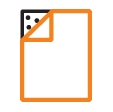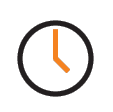3. Get Your Free Quote
Once you have set up your artwork file and have chosen your material for laser cutting from our range (Or you'll supply your own to our Sydney studio) we are happy to give you a free laser cutting quote.
Your quote is broken down into:
-

Set Up / Labour
-

Protective Paper
-

Materials
-

Laser Cutting Costs
-
Our set up fee covers the cost of downloading and importing your file, checking for errors, interpreting instructions and materials, formatting your job for cutting and sending it all through to be cut.
Our standard fee is $15 for simple well laid out drawings, increasing in $15 increments if your files are more complex, difficult to interpret or of a larger quantity that takes more time. The majority of jobs are $15-30 in set up cost.
Our labour fee (if required) covers any additional work beyond the standard laser cutting job. Our standard fee is $60 per hour plus GST.
If you cannot supply us with a vector file, or your file needs changes made we may charge for drawing time.Labour can also cover manual work besides laser cutting such as milling, sanding, peeling, painting, staining and construction.
-
Protective paper – is available and is recommended for all materials where the appearance of the cut surface is paramount. It will help to prevent flaring and smoke marks. It can also be used to protect card surfaces. When scored with the laser, the paper can be used as a paint mask by peeling up sections to be painted.
Note – acrylic already comes with a protective film. We remove the front layer to avoid burning and melt marking prior to cutting, but the top surface of acrylic is not particularly affected by flaring.
Double sided tape – is available and can be applied before laser cutting. It is especially useful when laminating layers of material as in a contour model.
Tip – consider how your pieces will be assembled as part of the design process, rather than as an after-thought. Avoid messy glue joins by integrating tabs and slots on your pieces or use double-sided tape rather than liquid adhesives. -
We put a lot of effort into making sure we have a large range of affordable materials in stock ready for you to use. As we order in bulk, we can pass the savings on to you the end user. We aim to have the cheapest material costs possible, to maximise your actual lasercutting budget.
The material cost in your quote is based on how much/many of our sheets are required to complete your cutting. We charge based on a quarter, half or full sheet depending on the drawing and we may re-arrange objects to reduce waste and the cost to you. We don’t charge any extra if you supply your own material.
Keep in mind though that our materials are selected with laser-cutting in mind, so all can be clean-cut with precision and safety in mind.
Tip - always remember to nest your parts efficiently on the cutting templates, to minimise wasted material and save cost. -
The laser cutting costs are based on the time your file takes to cut in the laser. For cutting and scoring, the laser needs to trace every line in your drawing at the right speed to have the desired effect on the material. Hence thicker and more dense materials are slower and cost more to cut than thin, light materials. Also complex curves are more expensive than straight lines. Duplicate lines get cut twice so make sure to double-check that there aren’t multiples hiding under one another.
Raster engraving works more like traditional printing in that the laser moves down the page in a series of horizontal lines, turning rapidly on and off to engrave your file. As such it is usually best to group objects that need to be rastered closely together in one part of your drawing ideally in horizontal lines. Whereas scoring is based on the number of lines, the cost of raster engraving is proportional to the total surface area that needs to be covered so it is great at conveying lots of detail in a small space, such as an image.

